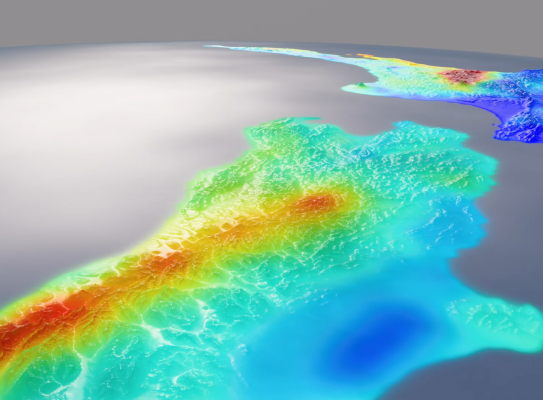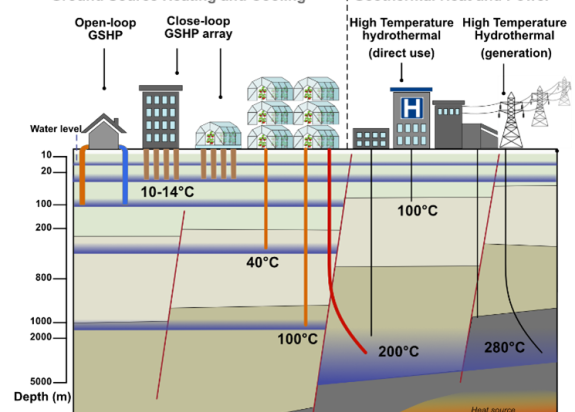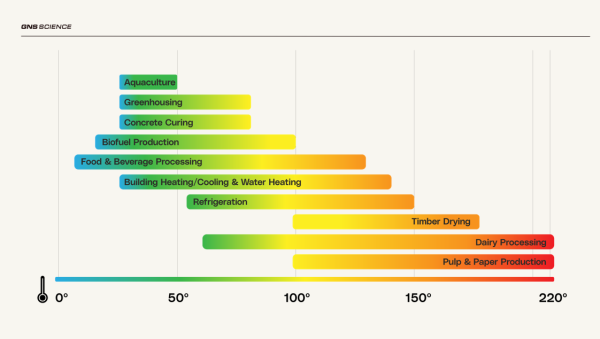Geothermal heat

Geothermal heat, or "Geoheat", is emerging as a powerful solution for New Zealand’s energy needs.
Geoheat is a renewable, reliable, and low-emissions energy source that’s already being used successfully across industries worldwide. Here’s why it could be a game-changer for New Zealand.
What is Geoheat?
Geoheat is the heat energy stored within the Earth. This heat energy comes from various natural processes, including heat radiating from the Earth's core, radioactive decay of minerals, volcanic systems, and solar energy absorbed on the Earth's surface. It can be harnessed directly in the form of steam, hot water or hot gases for heating applications at temperatures ranging from low to high, depending on the depth and geographical location.
Why use Geoheat?
Energy Efficiency: Traditional methods of heating, such as electric heating or burning fossil fuels like gas and coal, are relatively inefficient. A significant amount of energy is lost in the process of converting these sources into heat energy for the temperatures we need. There's simply no more efficient way to heat than with heat. Using geoheat means harnessing target temperatures as they occur in the Earth's surface, without the need for energy conversion.
Decarbonization: The need for a transition to renewable energy is also clear. Currently, heat production contributes to about 8% of New Zealand's gross emissions. By switching from gas or coal burner heating to geoheat, it is possible for industries to significantly reduce their emissions and carbon tax expenditure. For example, Essity’s Kawerau paper mill reduced carbon emissions by 37% (17,000 tonnes per year) by switching to geoheat.
Reliability and Consistency: Unlike solar or wind energy, geoheat is not dependent on weather conditions. It provides a consistent, 24/7 energy source, making it an excellent solution for industries and communities that need reliable heat at all times.

How to use it? - Ground source heat pumps
Ground source heat pumps (GSHP) are a renewable energy technology that can utilise geothermal resources with temperatures from 10°C - 100°C. Spaces can be heated or cooled by extracting and transferring the subsurface geothermal heat stored in soil, rock, surface water or groundwater. GSHP systems are considered to be one of the most energy-efficient technologies for space heating and cooling.
GSHP systems reduce carbon (and other) emissions, improve air quality, reduce peak demand for gird energy and provide certainty during energy transitions as well as contributing to energy security.
Examples of GSHP systems currently in use in New Zealand include the Christchurch Airport, Christchurch City Council and ECAN Council buildings, Canterbury University, Lower Hutt City Council, Hilton Hotel, Queenstown, and the Wairakei Golf Club.

Where is it?
Low temperature geothermal resources are defined by having a temperature of less than 150 degrees Celsius. These resources are available throughout many regions of New Zealand, and globally. Worldwide uses of low temperature geoheat include space heating, bathing, domestic heat pumps, heating greenhouses, and aquaculture.
High temperature geothermal resources are defined by having a temperature of more than 150 degrees Celsius. These resources are primarily available through in the Taupō Volcanic Zone where high heat flows reach the surface. Worldwide uses of high temperature geoheat resources include industrial processes
